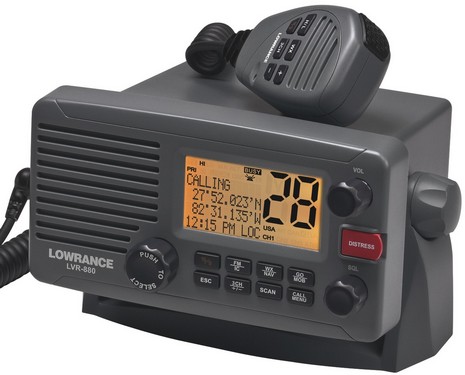Lowrance N2K FM/VHF, and more

If you check the bigger image, you’ll see the FM band button, a welcome first for a fixed VHF radio. But maybe better yet, I think, is the Lowrance style NMEA 2000 plug on the back.
The press release says the unit “integrates NMEA 2000 with DSC-101 for distress and buddy-tracking features when connected to a compatible Lowrance GPS chartplotter. An exclusive ‘Track Your Buddy’ feature connects DSC position polling to Lowrance LCX, LMS and GlobalMap units via the NMEA 2000 network for GPS location display of up to three boating friends.” The LVR-880 also has a regular 0183 interface, but I’m hoping that it uses standard 2000 messages, so in fact will share GPS and DSC position info with other N2K plotter/GPS’s, but my optimism is tempered by that ‘exclusive’ word and other details we know (like how the new Garmin’s won’t send it GPS yet). Let’s just say that using the 2000 protocol could make this radio really easy to set up with two way data comms, even to multiple other-brand devices. (Maybe they’ll let me experiment.)
And there’s lots more of note on Lowrance’s press release page. Like the fact that most all new Lowrance plotters can now display Navionics Platinum charts and lake maps, especially impressive as the units already work with a variety of formats. The company is also introducing a black box Broadband Sounder that’s said to produce “digitally purified”, “you won’t believe your eyes” echo clarity. It talks Ethernet and can plug directly into many existing Lowrance displays, or multiple displays via a new Navico Expansion Port. (I’d guess that the latter’s name means it will be sold across several Navico brands; why not?)

 Share
Share
Giving a VHF Marine Band radio a NMEA-2000 interface is a very smart decision. I hope other manufacturers take this same path.
A constant topic in most boat electronic discussions is how to connect a radio to a GPS and chart plotter. Lowrance has just eliminated that problem.